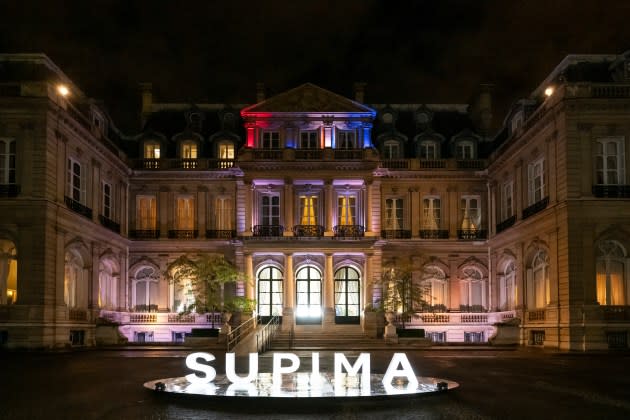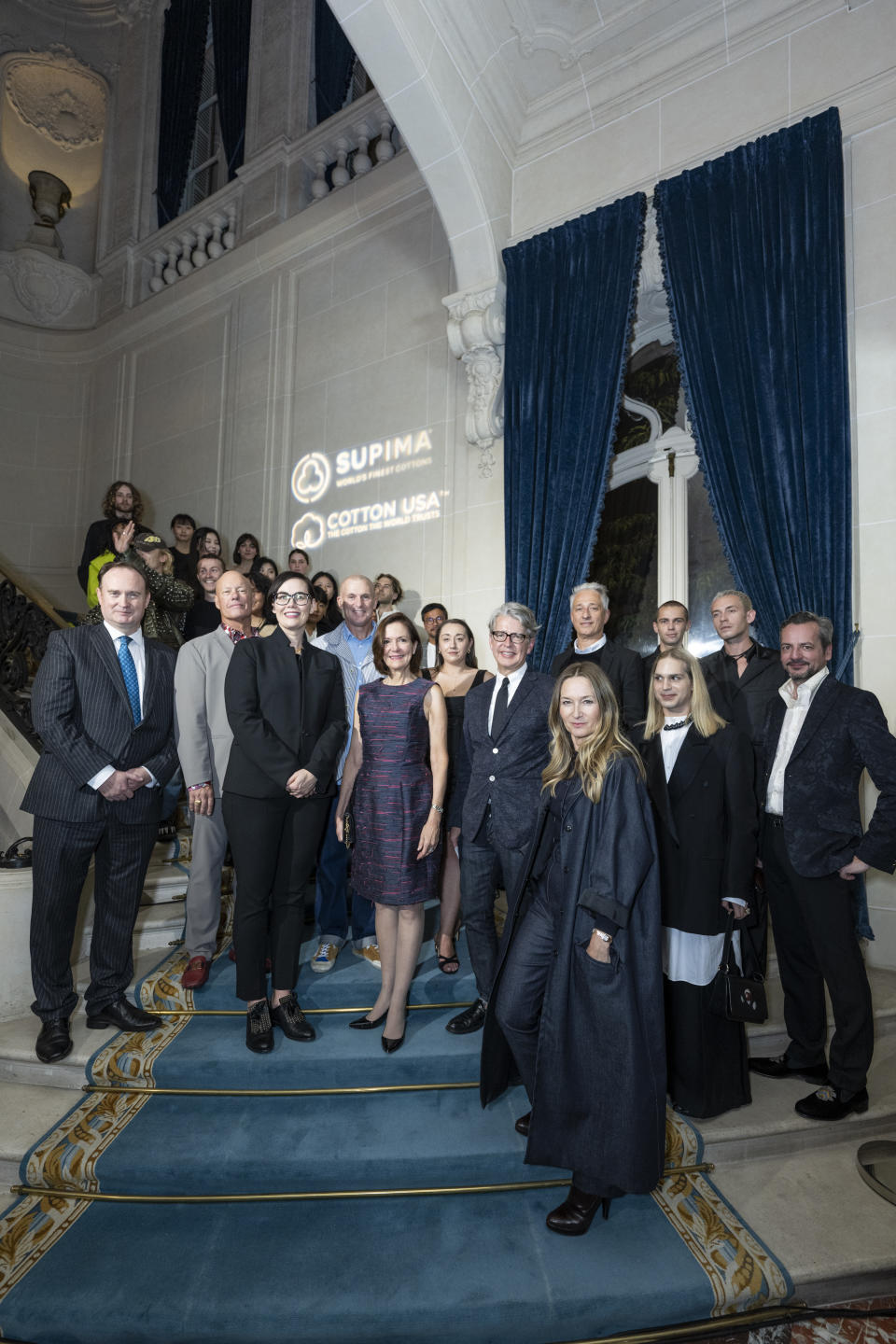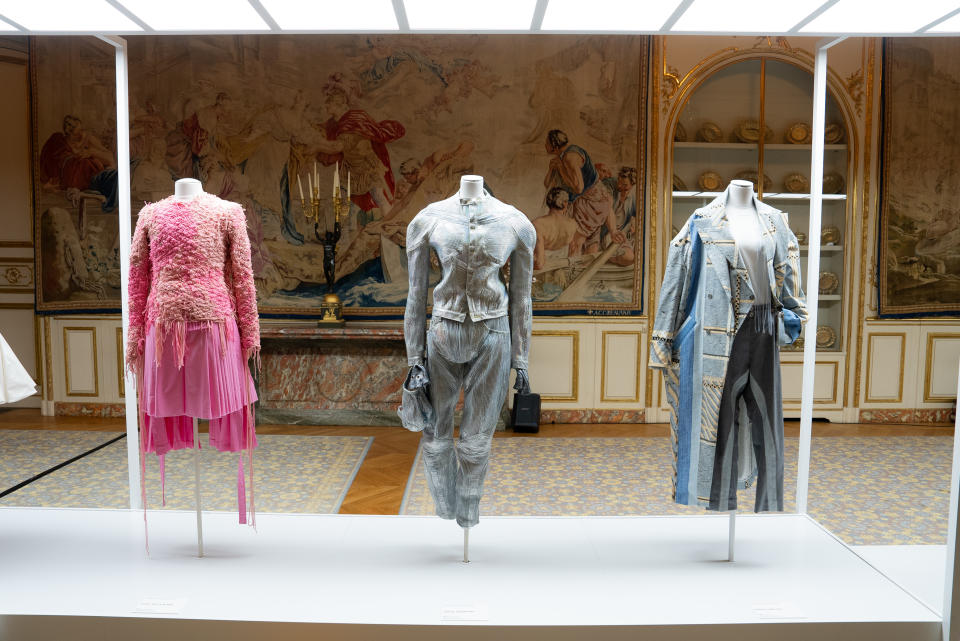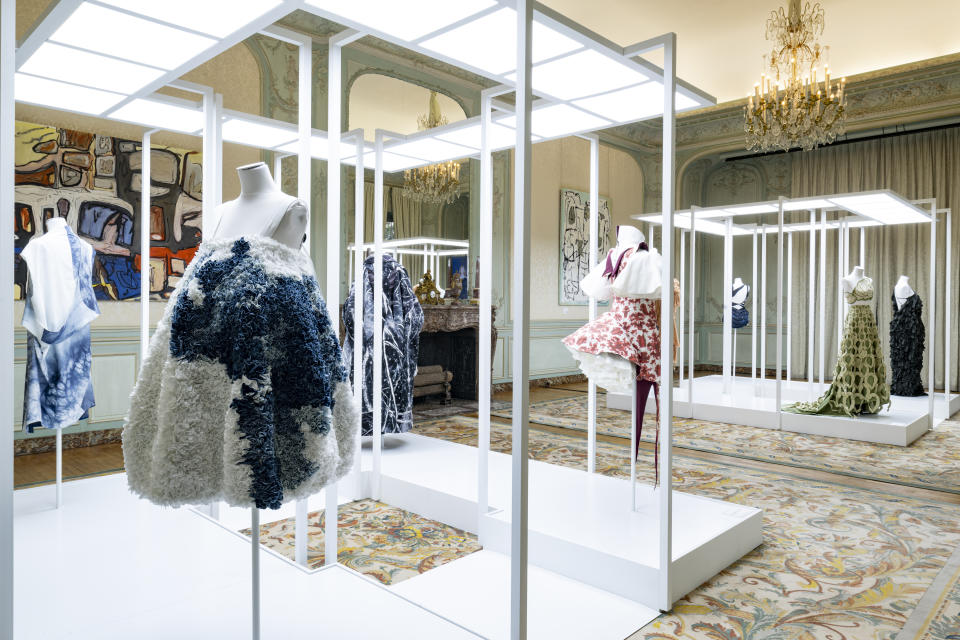American Embassy in Paris Opens Doors for Sixth Edition of Supima Design Lab

U.S. Ambassador Denise Campbell Bauer opened the doors of the official embassy residence Hôtel de Pontalba for an evening of celebrating young designers and American cotton.
A cocktail reception marked the sixth edition of the Supima Design Lab, a fashion showcase of works from newly minted design graduates in the Supima Design Competition in the U.S., finalists from last weekend’s Hyères International Festival of Fashion, Photography and Accessories, and a slate of more established young talents.
More from WWD
Max Mara Revamps Historic Paris Flagship, Launches Creativa Concept in Shanghai
Belgian Designer Igor Dieryck Scores Triple Fashion Prize Win at Hyères Festival
The grand rooms of the former Rothschild residence were lined with the designs on display, while classical piano greeted guests.
Campbell Bauer took to the grand steps of the residence to speak to the crowd as everyone squeezed into the entrance for a view.
“I think these are challenging times, it’s really, really great to have all of these good people, good positive energy, doing good things together and [to] celebrate our wonderful partnership with France and with each other,” she said.
Supima president and chief executive officer Marc Lewkowitz followed, noting that all were surrounded by the beauty and talent of the guests.
“We all feel for the sadness that is out there. Hopefully tonight, we can find a little bit of joy together and celebrate some of the beauty that we also have in the world, in terms of the new creative minds and the fashion and the beauty that’s possible, and the fiber that makes all of this possible,” he said.
Buxton Midyette, vice president of marketing and promotions, added that Supima’s “support for designers has always been the highest priority.”
“The magic that happens when you take these fabrics made with the very special Supima cotton, and you put them into such talented hands,” he said, and encouraged guests to speak with the young, passionate designers.

And magical it was, with guests mingling in the gilded rooms.
Lewkowitz said guests were part of the on the ongoing success of the event. He chalked it up to more than fashion. “The fiber has brought us together, but it’s the people that we’ve connected with that are making this a success — that are out there, sharing the stories, sharing their creativity, telling the celebratory process of [the fiber] it starts with,” he said. “It’s all about bringing people together, bringing creative minds together, enabling connections to be made, imagining and reimagining things in a different way in a different light.”
He highlighted the climate change challenges that face the industry, particularly the seesaw of drought and flooding conditions in California, where much of the cotton is grown, and noted that Supima launched as the first fully authenticated, traceable fiber on the blockchain on July 1. Developing the technology took 12 years of work.
“It’s been blood, sweat and tears, a lot of investment and a few mistakes,” he said. The authentication is not only fiber DNA but location-based, down to the farmer as well, which will help differentiate the fiber’s growing criteria in the face of upcoming EU and U.S. regulations. “[Now] we have honesty in the textile world, and that’s a beautiful thing.”
Lewkowitz finds working with young designers particularly gratifying, in part because it is oftentimes the first exposure they have to a natural fiber as they often work with synthetics for effect. “As you walk through here, you can see the reimagination of it — how can we make cotton look like a technical fabric, add crazy color to it, or make it shine? There are so many iterations of amazing technical capabilities in the pieces.”

Case in point was Leevi Ikäheimo, who learned on site that he had carted away the Supima Coup de Coeur honor. “This is the best way to find out — I had to ask what it meant,” he said, excitedly showing off his futuristic denim design. Ikäheimo used a series of special bleaching, holographic printing, glue and foil techniques for the metallic finish, and shaped the material into voluminous, rounded edges with an urban warrior feel.
“People were asking me, ‘Is this how you see fashion’s future?’ And no, I see this as fashion’s present. It’s for anyone who wants to have fun. That’s what my collection is all about,” he said. Ikäheimo added that he hopes the shiny jeans can be produced if the treatments can be streamlined.
His work was showcased amongst the select group of finalists from the festival, including triple-crown winner Igor Dieryck, who took home the Grand Prix of the Jury Premiere Vision, the 19M Métiers d’Art prize and the Public Prize from the City of Hyères.
Other works were from Tiago Bessa, Alec Bizby, Fengyuan Dai, Petra Fagerstrom, Jung Eun Lee, Norman Mabire-Larguier and Bo Kwon Min.
Yeonghyeon Kim made the first accessory on display with a snaking body ornament that would wind up the torso of the wearer.
A handful of Paris-based international designers had unique creations on display, including Jenny Hytönen, Julie de Libran, Nix Lecourt Mansion, Niccolò Pasqualetti, Vincent Pressiat and Victor Weinsanto.
Pressiat displayed the look that closed his September Paris Fashion Week show, this time with the removable sleeves intact to differentiate the outfit from the asymmetric version he sent down the runway.
It was also his first time working with Supima, and he noted that it is difficult to find strong cotton to work with in today’s market. The fabric held up to his destructive techniques, leading to the deconstructed striping on a shapely corset dress.
“The lines are clean and [alternately] destroyed like the lines in your life — you have good moments and bad moments,” he said of the inspiration. Pressiat was presented next to fellow wunderkind Weinsanto.
For his part, Weinsanto praised the heft of the fabric. “It’s just good quality, you can do anything you want.” He created a white column dress with a variation of textures, including embroidery from Margo Ficatier, which took three weeks of work. Weinsanto wanted the foundational dress to be clean and simple, with the appliqués showing messiness and (intentional) “mistakes.”

Recent graduates from U.S.-based design schools were featured in the Supima Design Competition section, with creations from winner Carla Pierini on display, alongside Sahara Clemons, Mariana Espinosa, Hee Jin Hwang, Amber Kuai, Wendy Weng, Tianze Wu and Alexander Ziemba.
Wednesday’s cocktail reception is being followed by a formal dinner Thursday night at the Embassy.
Best of WWD


